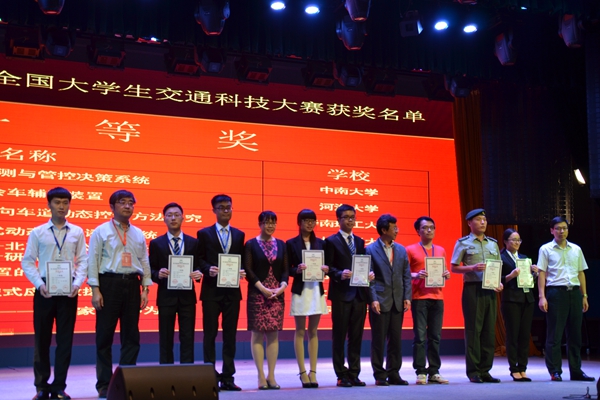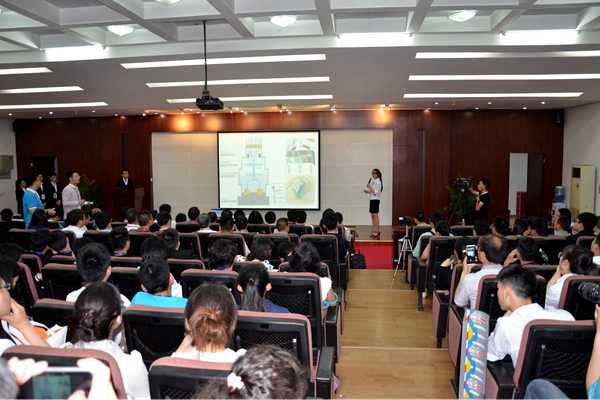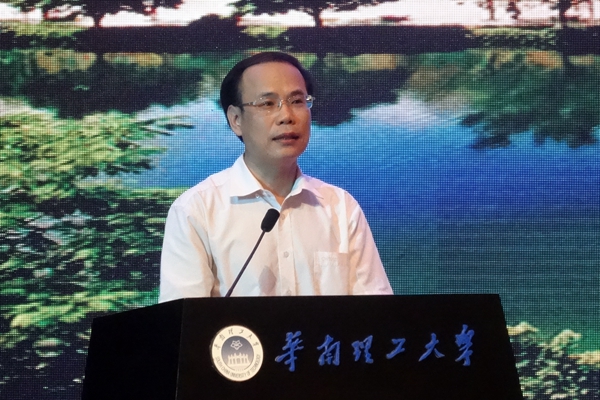
Awarding ceremony
Sponsored by TrafficData, the 10th National Competition of Transport Science and Technology for Students (NACTranS) was successfully held in SCUT from May 23th to 24th. Students from SCUT won one first prize and three third prizes. Over 600 people attended the ceremony, including Qiu Xueqing -- the vice president of the SCUT, Yan Hong, who was director of Education and Training in Department of Education and Personnel of the Ministry of Transportation and also secretary-general of the steering committee of education and instruction on transportation of universities, related officials of the higher education department, the traffic steering committee of education and instruction in Guangdong, and the Traffic Data, members of the contest’s academic committee, the arbitration committee and the expert committee, all the competitors and head teachers, and all the representatives at SCET. The closing ceremony was held by the president assistant Prof. Su Cheng.

The Final Oral Defence
More than 500 transportation talents from 49 universities gathered at SCUT to have a final contest. With an assessment conducted by experts, works of 8 universities, such as Central South University, Lanzhou Jiaotong University, Hehai University, South China University of Technology, Beijing Institute of Technology, PLA University of Science And Technology, Tongji University and Beijing University of Technology, were selected for the next round of competition for the first prize.

The Vice President Qiu Xueqing making an address
In the closing ceremony, vice president Qiu Xueqing highly praised the participants for their strong enterprise and exploration of the truth of science. He pointed out that SCUT attached great importance to the development of the scientific innovative ability of college students. He said the competition provided a platform for university students majoring in Traffic Engineering or other related professions to communicate with each other on good ideas; a platform for university students and companies to communicate with each other on how to cultivate and select the talented. Besides, he also held that the competition was crucial to improve students’ scientific innovative ability, promote students’ healthy growth and expand students’ employment channels.
Displaying works to judges
The entries fully manifested an advance in the development of information, intelligence and collaboration of the traffic sector, and illustrated the people-oriented concept of harmonious traffic. Lots of works involved the most advanced and hottest fields. Some showed the human concern to people’s life, such as works of the short-time intelligent rental system for reserved parking spaces, the driving distraction detection device, the floated emergency rescue exit, the isolation and purification of the highway surface haze through the air curtain.
Song Chao and other four students from SCET won the first prize. Based on the vehicular networking technology, their work The research on the Dynamic Control Method of Variable Lane , aimed at solving traffic problems in the morning-evening peak period. The players not only considered measures to exceptional situations, such as the car accident, the emergency rescue, but also proposed a model to dynamically change directions of the lane via changes of the traffic condition and designed the matched infrastructure. Their instructor Ma Yingying said: ‘Through the simulation and assessment, they found that it indeed could greatly decrease traffic delays and improve the road efficiency, and finally make the traffic of two directions a balanced state.’
Scene of the contest
The 10th NACTranS, themed by ‘harmonious traffic’, had great innovations on forms and contents of the contest, and members of the academic committee. It involved 4 research fields: traffic organization optimization in central business department (CBD), transportation planning and management, traffic information engineering and control, transportation vehicle application engineering and road and railway engineering. The contest, which had been prepared since early November 2014, attracted students from 119 universities in China, including Hongkong, Macao and Taiwan, to participate in. In the preliminary stage, SCUT received 280 works from 96 universities, making a historical record in the number of universities and entries. (Photos/ News Wu Jianling, SCET)
